Composer George Russell traveled the spaceways and now he’s on the last trip.
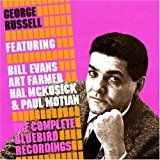 You may not have known him, but if you listen to music in general, jazz in particular and maybe even Echoes, you heard his influence. George Russell guided trumpeter Don Cherry, guitarist Terje Rypdal, saxophonist Jan Garbarek and many more into new musical terrain.
You may not have known him, but if you listen to music in general, jazz in particular and maybe even Echoes, you heard his influence. George Russell guided trumpeter Don Cherry, guitarist Terje Rypdal, saxophonist Jan Garbarek and many more into new musical terrain.
He died on July 28th, at age 86, reportedly from complications arising from Alzheimer’s disease.
I first heard George Russell in the early 1970s. A copy of his 1965 album, Live at Beethoven Hall, fell into my hands. I was initially attracted by the presence of trumpeter Don Cherry, but was quickly flying off the walls to Russell’s challenging yet kinetically driving compositions. I began gathering his music together, which dated back to the late 1950s with Jazz in the Space Age, Stratusphunk and The Stratus Seekers. Fortunately for me, many of his albums on the Flying Dutchman label turned up in cut-out bins right at the time I was looking.
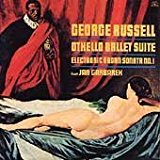 In his middle and later years, Russell favored sprawling, conceptual works like “Electronica Sonata for Souls Loved by Nature,” “Othello Ballet Suite” and “The African Game. ” But despite those high-minded titles, the music was always grooving, and no matter how far out it got, Russell lgave you something to hold on to while the music moved in layered and swirling spirals of knotty compositions and free improvisation. “Electronic Sonata” has one of the killer ostinato bass lines in jazz. “The African Game” brims with bristling horn lines and surging rhythms.
In his middle and later years, Russell favored sprawling, conceptual works like “Electronica Sonata for Souls Loved by Nature,” “Othello Ballet Suite” and “The African Game. ” But despite those high-minded titles, the music was always grooving, and no matter how far out it got, Russell lgave you something to hold on to while the music moved in layered and swirling spirals of knotty compositions and free improvisation. “Electronic Sonata” has one of the killer ostinato bass lines in jazz. “The African Game” brims with bristling horn lines and surging rhythms.
Russell was given a MacArthur Genius award in 1989, largely a testament to his 1953 book, The Lydian Chromatic Concept of Tonal Organization. It was a different way of looking at scales, harmonies and chords.
Along with guitarist Terje Rypdal and drummer Jon Christensen, Norwegian saxophonist Jan Garbarek was a disciple of Russell in the 1960s and 70s. “George Russell was my first encounter with musical thought and organization and techniques of music making presented in such a clear way,” he explains. “Relationships between chords and scales, tonality and atonality, giving you options of where you wanted to be, in the tonal center or way outside.”
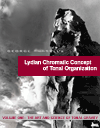 The Lydian Chromatic Concept was an influence on both Miles Davis and John Coltrane. Russell worked with many of the greats in jazz. He was a drummer during the be-bop years although recurring tuberculosis kept sidelining his career. That was possibly a good thing since he learned music theory during one of his hospital stays. One of his first major works was a composition was for the Dizzy Gillespie Orchestra,”Cubano Be, Cubano Bop” in 1947.
The Lydian Chromatic Concept was an influence on both Miles Davis and John Coltrane. Russell worked with many of the greats in jazz. He was a drummer during the be-bop years although recurring tuberculosis kept sidelining his career. That was possibly a good thing since he learned music theory during one of his hospital stays. One of his first major works was a composition was for the Dizzy Gillespie Orchestra,”Cubano Be, Cubano Bop” in 1947.
I got to interview Russell in the mid-1980s at his home in Boston. He sat at a Fender Rhodes and explained his Lydian concept to me. I got to see “The African Games” and “Vertical Forms” editions of his Living Time Orchestra a few times, including a great set in London and another at the African American Museum in Philadelphia. You always walked out of his shows six inches off the floor with your mind electrified.
Recommended Listening:
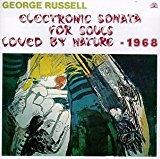 Electronic Sonata for Souls Loved by Nature
Electronic Sonata for Souls Loved by Nature
This is the original version from 1968. I favor a big orchestral version that came out a few years later on a CD called The Essence of George Russell, but haven’t seen it in years. With Rypdal, Garbarek, Christensen and Red Mitchell laying down that hypnotic bass-line, this album and composition should be right up there with A Love Supreme and Free Jazz.
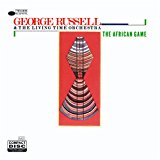 The African Game: This is one of his most sprawling and embracing works, an album length suite for expanded big band, it moves from bop to free playing, moments of funk and one movement with electric pencil sharpeners. Russell, then an elder of jazz, was able to freely embrace contemporary modalities without pandering or self-consciousness.
The African Game: This is one of his most sprawling and embracing works, an album length suite for expanded big band, it moves from bop to free playing, moments of funk and one movement with electric pencil sharpeners. Russell, then an elder of jazz, was able to freely embrace contemporary modalities without pandering or self-consciousness.
John Diliberto ((( echoes )))

Artist of stratsupheric order. Sad day for music.
I thought that The African Game concert in Philadelphia was held during New Music America ’87 at the Port of History Museum (now known as the Independence Seaport Museum) – – not the Afro American Museum (as it was then called).
I believe he played in both locations on two separate occasions. NMA ’87 was one of them.
Years ago, I was caught on a similar situation. I remember crossing my fingers when I ordered At The Beethoven Hall (MPS LP) over another record. “GUEST ARTIST – DON CHERRY” was an instant attention grabber. Having listened to both artists on separate albums, I was very intrigued how it would sound and took the gamble. Gladly, it contained great great material plus a very informative liner notes written by Joachim E. Berendt.
Yes, Joachim E. Berendt was a big part of my jazz education. I got to interview him in the 1980s. One of the great music men.
Wow thats great! His book, Was ist Jazz? I immediately grabbed from the library when I first saw it. I learned alot from that book. Speaking of liner notes, was it you who wrote for a reissued CD released by Evidence, Sun Ra’s Sound Sound Pleasure?
That one as well as Lanquidity. I also produced NPR’s Jazz Profiles segment on Sun Ra.
Fantastic work!!! Thanks!
You can get The Essence Of George Russell on Emusic – and most other George Russell stuff. A great place to get jazz very cheaply